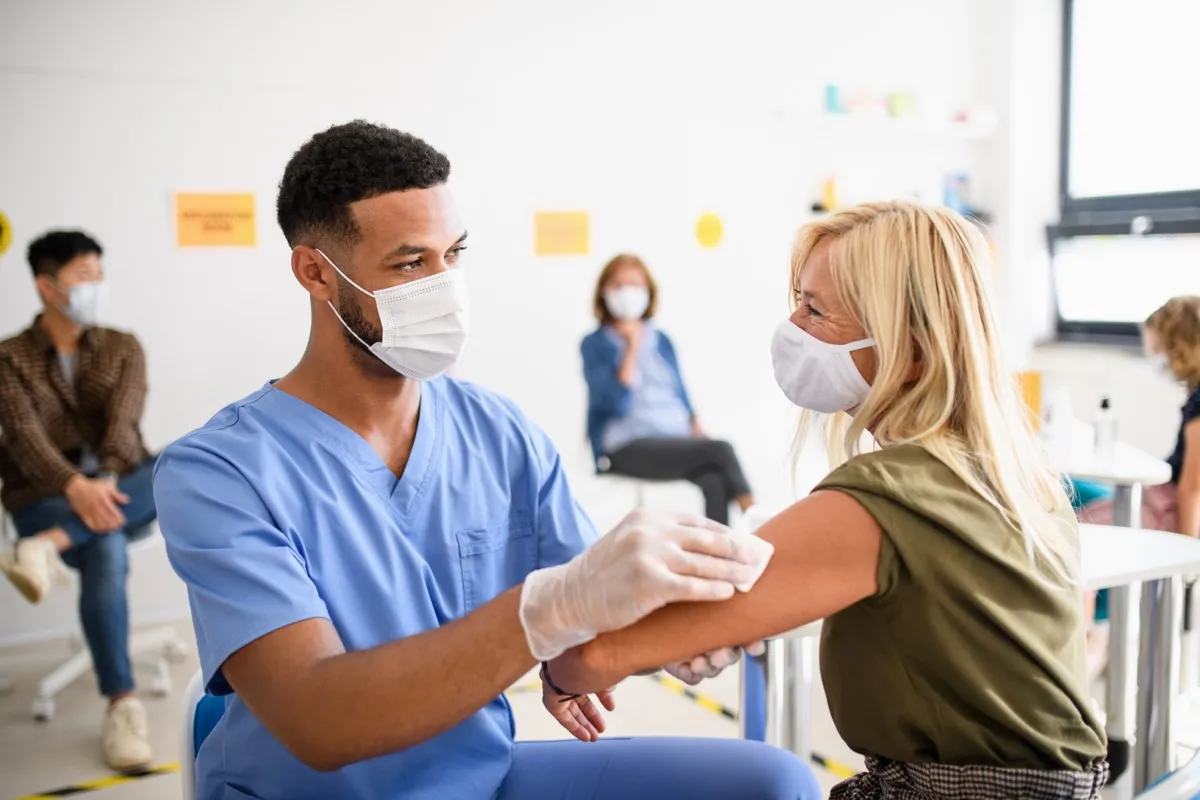During the press briefing reviewing the newly unveiled changes, CDC Director Rochelle Walensky, MD, was asked by a reporter what factors had contributed to stopping short of removing more restrictions on travel and PPE use in public. “There’s increasing data now that suggests that [people who are vaccinated] might get breakthrough infections with lesser amounts of virus, lesser amounts of disease, lesser symptomatic disease—milder disease. However, we’re still waiting for data to emerge on whether they could transmit that virus to other people,” she explained.ae0fcc31ae342fd3a1346ebb1f342fcb Walensky also pointed out that while major progress had been made in increasing vaccinations, a vast majority of people have yet to receive their jabs. “I think it’s important to realize that, as we’re working through this, still over 90 percent of the population is not yet vaccinated and that it is our responsibility to make sure in the context of 60,000 new cases a day, that we protect those who remain unvaccinated and remain vulnerable. We’re doing our best to do that.” And for more on what vaccinated people can do now, check out The CDC Says Fully Vaccinated People Can Now Do These 3 Things. Still, Walensky remained optimistic that the coming months would see most major goals met that would allow for another overhaul of the CDC’s public health guidelines. “Our next steps in terms of putting out the guidance as I mentioned is really to see a larger swath of the population vaccinated, and we’re actively on our way to doing that, as well to hopefully further see cases decline in the country, as well as waiting for new data to emerge,” she said. “We’re hoping in a relatively short period of time, but we do need to see some more new data as well.” And for more on the one way you may not actually be keeping yourself safe, check out If You’re Layering These Masks, the CDC Says to Stop Immediately. While they didn’t get rid of masks, the CDC’s guideline changes offered some major changes in what those who are immunized are allowed to do. “The CDC recommends that fully vaccinated people can visit with unvaccinated people from one other household—indoors, without wearing masks or physical distancing—as long as the unvaccinated people and any unvaccinated members of their household are not at high risk for severe COVID-19 disease,” Walensky said. She further clarified the changes, saying: “Here’s an example: If grandparents have been vaccinated, they can visit their daughter and her family—even if they have not been vaccinated—so long as the daughter and her family are not at risk for severe disease.” And for more big COVID news delivered right to your inbox, sign up for our daily newsletter. Still, the agency advises that previous guidelines—including wearing a mask, social distancing, and preferably meeting outdoors—should be followed when visiting anyone who is unvaccinated and at high risk of developing severe COVID. According to the CDC, this includes anyone older than 65, anyone who’s pregnant, or anyone who is immunocompromised, smokes, or who has medical conditions such as cancer, chronic kidney disease, COPD, Down syndrome, obesity, sickle cell disease, type 2 diabetes, and various heart conditions. “When fully vaccinated people visit with unvaccinated people, we have to consider the underlying risks of the unvaccinated people and any unvaccinated members of their household,” Walensky said during the briefing. “We take this approach because all of our guidance is rooted in making sure we are keeping people safe.” And for more on when we may finally be able to put COVID firmly in the past, check out This Is When the COVID Pandemic Will Be Completely Over, Experts Say.



